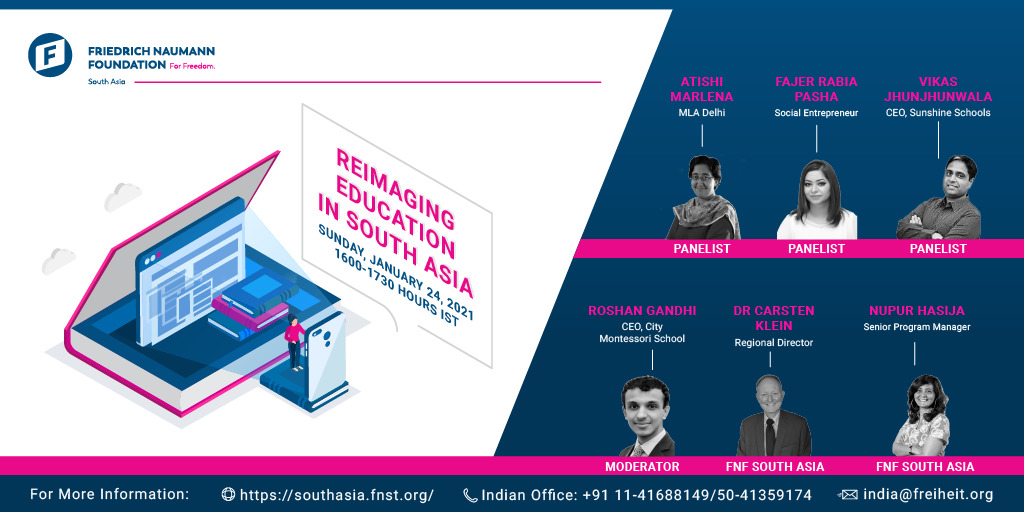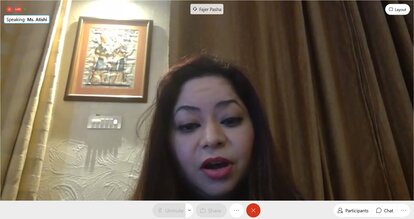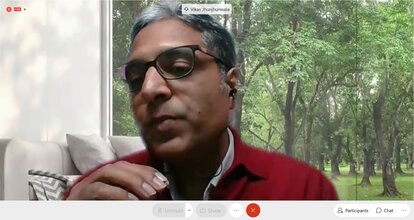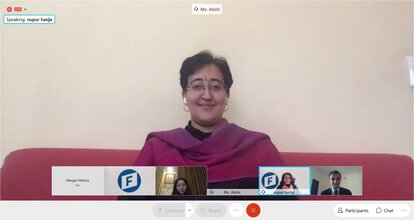Education
Reimagining Education in South Asia Post COVID-19

The world is facing one of the biggest challenges of recent times with the outbreak of COVID-19 pandemic. One of its major victims is the delivery of education to students as the schools are closed in most of the countries across the world. The uncertainty around the re-opening of schools and conducting classes persists. South Asia, which has a sizeable population of school-going children is feared to have a huge learning deficit.
According to a recent report titled ‘Beaten or Broken Informality and COVID-19 in South Asia’ by the World Bank, the south Asian region stands to lose USD 622 billion from school closures in the present scenario or up to USD 880 billion in a more pessimistic scenario. The prolonged closure of schools due to the COVID-19 pandemic in India may cause a loss of over USD 400 billion in the country’s future earnings, besides substantial learning losses.
The education delivery system with all its merits too has many flaws, which have been identified and discussed widely. However, the inertia against change makes it difficult to try new methodologies during ordinary days. While the pandemic has caused immense problem, the Friedrich Naumann Foundation for Freedom South Asia also sees the crisis as an opportunity to redesign the current mainstream education delivery system or even rethink alternative education in various innovative ways to address the damage.
To initiate the debate towards this rethinking, it becomes imperative to establish a platform to discuss and debate the status of access and quality of education. To deliberate over the situation, FNF organized a webinar with policymakers and practitioners from South Asia in school education space. The webinar panel consisted of Ms Atishi Marlena Singh, the architect behind the education revolution in Delhi; Mr Vikas Jhunjhunwala, a budget private school leader; and Ms Fajer Rabia Pasha, an advocate for girl’s education. The discussion was moderated by Mr Roshan Gandhi, Chief Executive Officer of the City Montessori School—the world's largest city-school.
The panellists started the webinar by taking stock of the situation. According to Ms Fajer Rabia Pasha, incredible work was done to impart education through television and radio. The curriculum-mapped educational content was developed in a short span of time by the government with the engagement of civil society groups and ed-tech companies. The intervention was designed keeping in mind the access to the internet, digital devices and electricity. Schools and segments of population with access to these could conduct online classes.

‘The good thing that has happened during this pandemic is the issue of education being highlighted nationally. Never before have we talked so much about it, never before did we see so much of citizen engagement about it.’
Mr Vikas Jhunjhunwala presented the perspectives of providing education to the children from a low-income community in urban India during the pandemic. Approximately 125 million students, which is 50 per cent of the total in the age group of 6 to 14 in India, go to private schools. About 110 million students are enrolled in budget private schools which charge a monthly fee of below INR 2000.
The impact of the pandemic on the budget private schools has been disastrous. Budget private schools operate on a business model wherein the only source of revenue is the fee charged. Majority of the parents sending their children to these schools, earn their livelihoods from the informal economy that was the worst hit during the pandemic. The affected parents stopped paying the school fee. Parents who could afford to pay school fee too stopped paying the fee as usual classrooms were not being held. According to Mr Jhunjhunwala, most of the budget private schools in India came up as a market response to provide a comparatively better quality of education post-economic liberalization as the purchasing power of parents started increasing.
Many of the budget private schools have permanently closed as these were not equipped to provide online education. Many of these schools tried to fast transform themselves to be able to impart education using available technology and infrastructure.

‘About [110 million] children are studying in budget private schools charging monthly fee below INR 2000 in India. This is more than the total population of many countries. These schools [were] worst hit due to pandemic as the economy sunk.’
Ms Atishi added significant insights to the discussion from a policymaker’s perspective. Education had been at the forefront of the Government of Delhi but during the pandemic ensuring basic services to the people took precedence. According to Atishi, the educational gains made in the past have suffered a considerable setback during the pandemic. In the early 1990s, approximately 60 per cent of students went to school which had gone up to roughly 95 per cent. However, as classroom education was out on hold, the access to education was lost and we are back to the 1990s situation.
There has always been inequity in access to education in India which has become all the starker as online education is impractical in government schools and the community it caters to. The Government of Delhi evolved a hybrid model of online and offline education using SMSs, voice messages, WhatsApp chats and home worksheets. The challenge is to manage the learning gap among children when the schools reopen.

‘There has always been deep inequity in education. This inequity has just become far starker. The country had pretty much solved the problem of access and we were focused on addressing the issue of quality. This gain in education was lost and we are back to square one as access became the key problem.’
Regarding the way forward for bringing back education on track and mitigating the learning loss, there was a consensus among the panellists that online education cannot replace classrooms and therefore schools should start reopening safely. Learning poverty must be addressed with innovative solutions such as blended learning or uniformed national curriculum.
The first attempt must be in bringing back the students to schools as there is a fear of increased dropout. There should be an increased focus on the mental well-being of the children. Customized targeted solutions need to be evolved to address the learning gaps. Many of the students in government schools are first-generation learners and would need a different approach to ensure foundational learning as there is no learning support available at home. The technology could be integrated into educational infrastructure going forward as a learning aid but cannot be a solution in itself.
The government has an important role to play in access as well as the quality of education. It must take the responsibility of regulation as well as provisioning for the public schools but in case of private schools, it can only play the role of a regulator. The government could incentivise private players to support and innovate the delivery of educational activities.
The panel discussion was followed by Q and A from the audience. The questions were aptly addressed by the panellists.
If we synthesize all the discussion points, we find that:
- There is no alternative so far to classroom education in schools. Digital tools can however play a significant role in aiding the learning process.
- In the school education segment, budget private schools are the worst hit and have become unsustainable.
- There is learning loss among most students which would require increased investment in education.
The solution to the impact of the pandemic on school education must be designed keeping in mind the diverse target groups. One of the ways to provide immediate relief to the ailing education sector could be an increased investment. This investment could be targeted to all the students irrespective of enrolment to kind of schools in form of direct benefits transfer.
In private schools, students may pay the pending school fee while in public schools, students may use alternate educational aid for a fee. The schools should start opening as soon as possible with appropriate hygiene, sanitation and social distancing norms.
However, to sustain such a situation in a long run, a different approach may be needed. Education institutions need to integrate technology in operation, learning delivery and management. Increased attention must be paid to mental health and wellbeing of the students to deal with uncertainty and difficult times. Private schools must not operate on a for-profit business model but are supposed to be a charitable organization by law. This provision restricts investment in education from the private sector. The not-for-profit provision for private schools should be removed for increased investment in the sector. This should also incentivize private schools to build strong financial provisions to deal with a situation like the ongoing pandemic. All the players engaged in the delivery of school education should be encouraged and incentivized for their sustained efforts.
